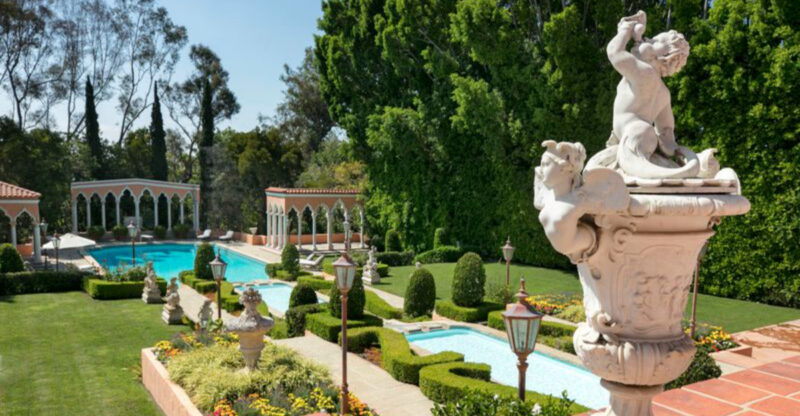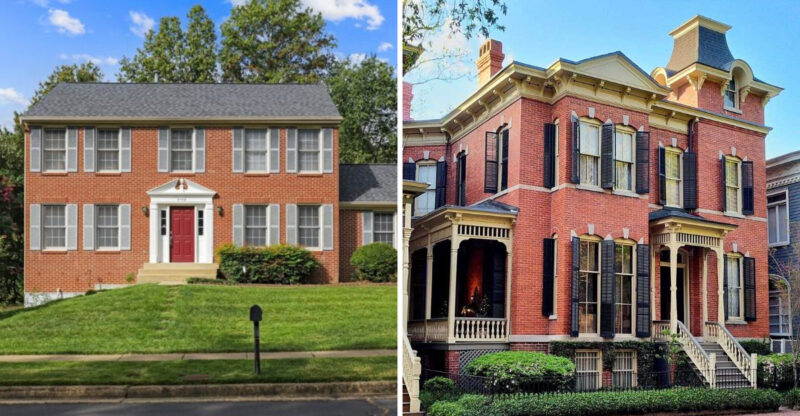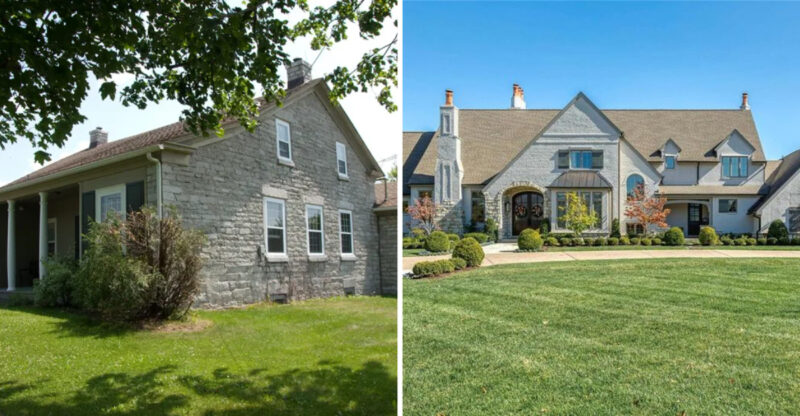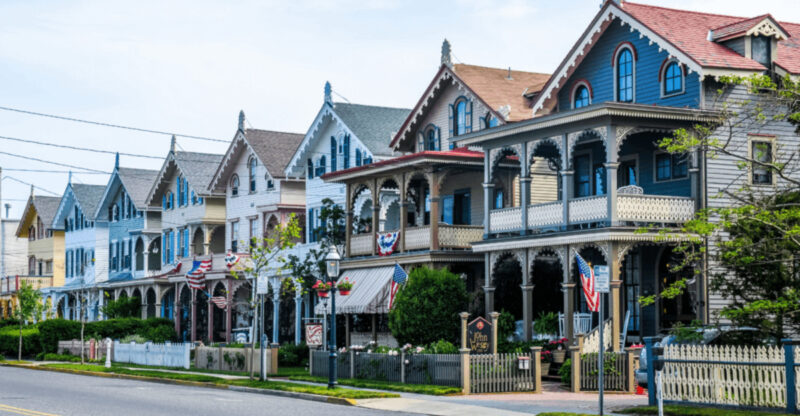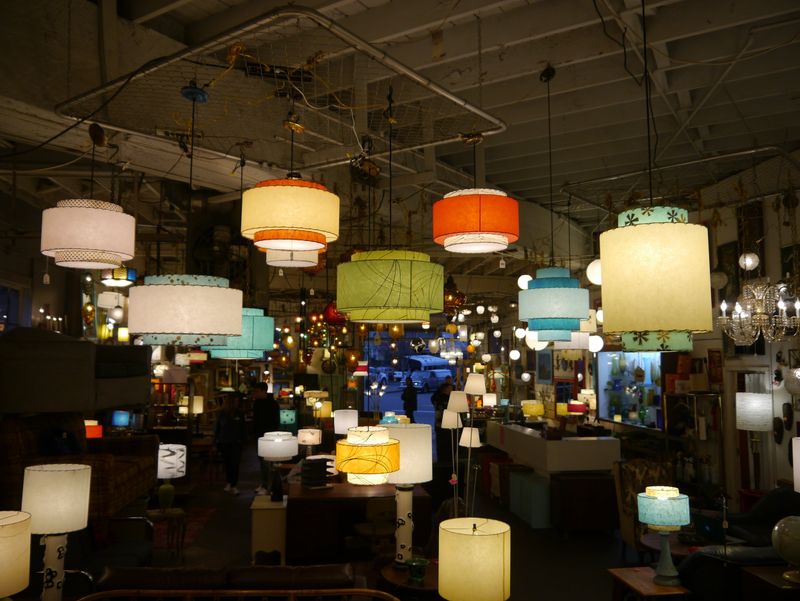10 Farmhouses That Could Showcase Lasting Stone Character In Pennsylvania
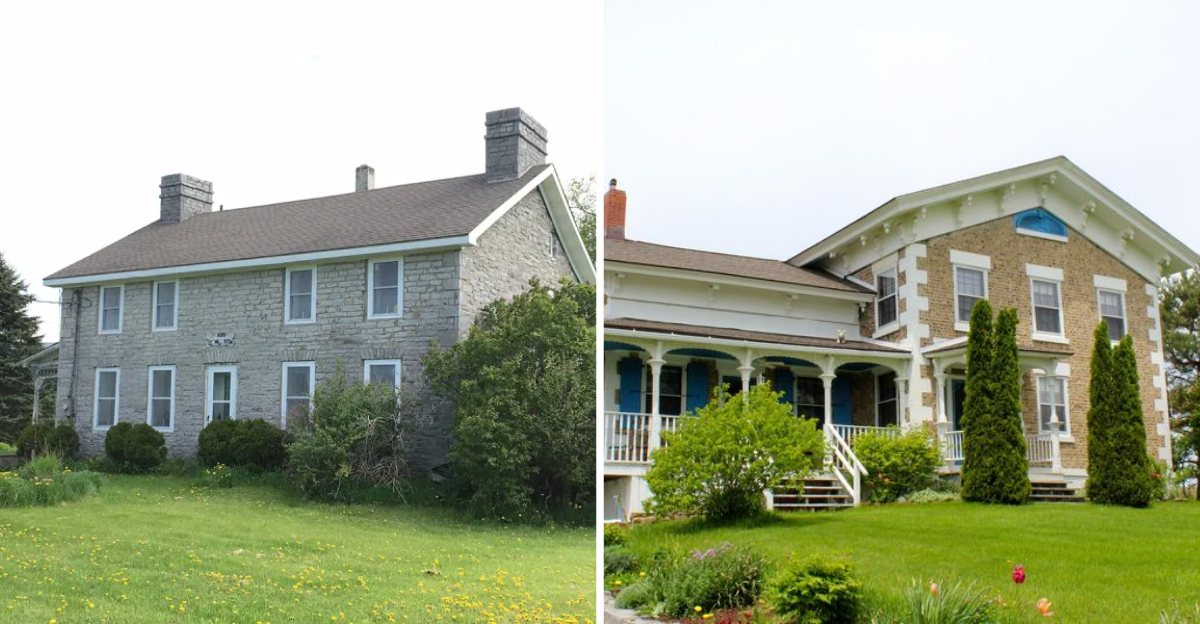
Pennsylvania’s countryside is dotted with beautiful stone farmhouses that tell stories of our past. These sturdy buildings have stood for generations, weathering storms and changing times while keeping their unique charm.
Let me show you ten incredible stone farmhouses across Pennsylvania that capture the essence of early American architecture and rural life.
1. Lancaster Countryside Farmhouse
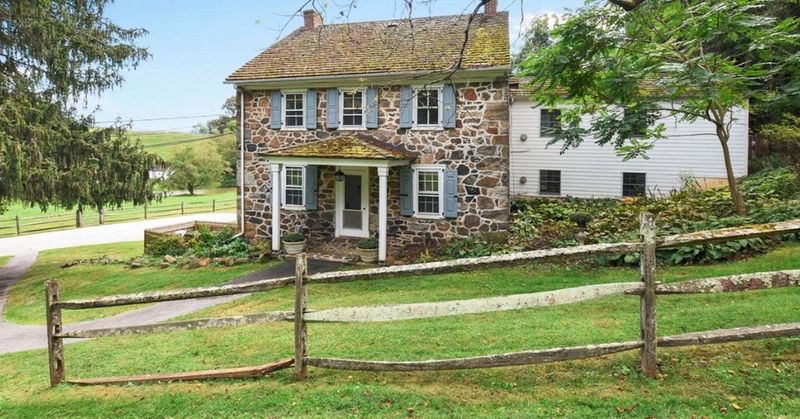
Nestled among rolling Amish farmland, this 1790s beauty features locally quarried limestone walls that have stood strong for over two centuries. The massive central chimney and symmetrical facade speak to Pennsylvania German building traditions that valued both function and simple elegance.
Original wooden beams still support the ceiling inside, where six fireplaces once warmed the spacious rooms. A spring house built into the hillside behind the main structure once kept milk and butter cool.
Did you know? Many Lancaster farmhouses were built near natural springs, which provided fresh water before modern plumbing and helped preserve food in the days before refrigeration.
2. Gettysburg Stone Farmhouse
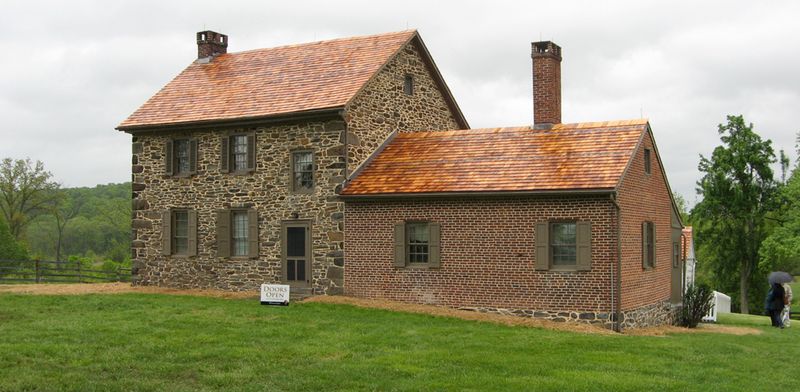
Witness to history, this Civil War-era farmhouse stood at the edge of the battlefield where America’s future hung in the balance. Its thick fieldstone walls bear silent testimony to the conflict, with one side still showing damage from artillery fire during the famous 1863 battle.
The farmhouse features a classic Pennsylvania forebay bank barn design, with the second floor extending over the first. Inside, wide-plank pine floors and exposed beams transport visitors back in time.
I’m always moved by the penciled notes from Civil War soldiers still visible on an attic wall, where the building briefly served as a field hospital during those three fateful days in July.
3. Hershey Rustic Stone Farmhouse
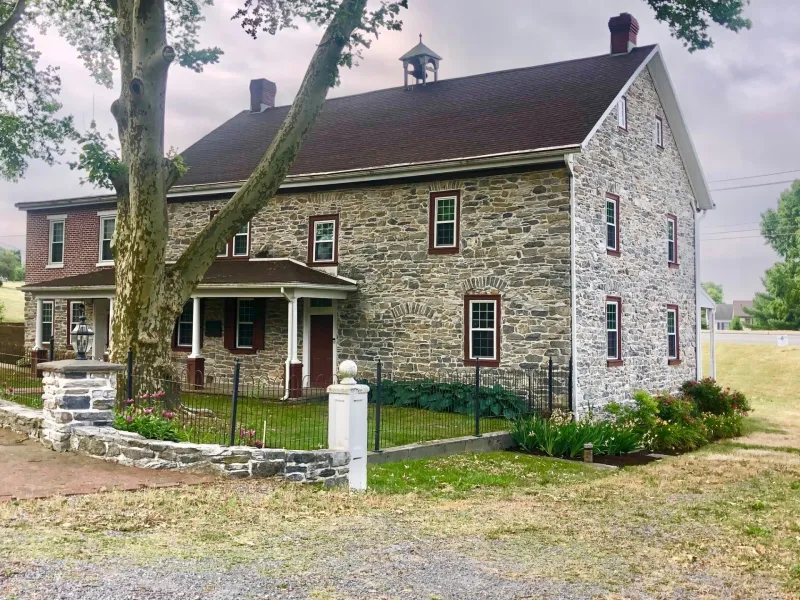
What makes this 1850s gem special is how it combines rugged Mennonite practicality with unexpected touches of Victorian charm. The main structure uses irregular brownstone blocks that create a warm, earthy appearance unique among Pennsylvania farmhouses.
Chocolate magnate Milton Hershey reportedly visited this property while planning his model town. You can see how the wraparound porch with delicate gingerbread trim was added later, reflecting changing architectural tastes as the area prospered.
If you look closely at the cornerstone, you’ll find the original family’s initials and date carved by hand. The summer kitchen attachment still has its massive cooking hearth with the original iron crane intact.
4. Bethlehem Historic Stone Farmhouse
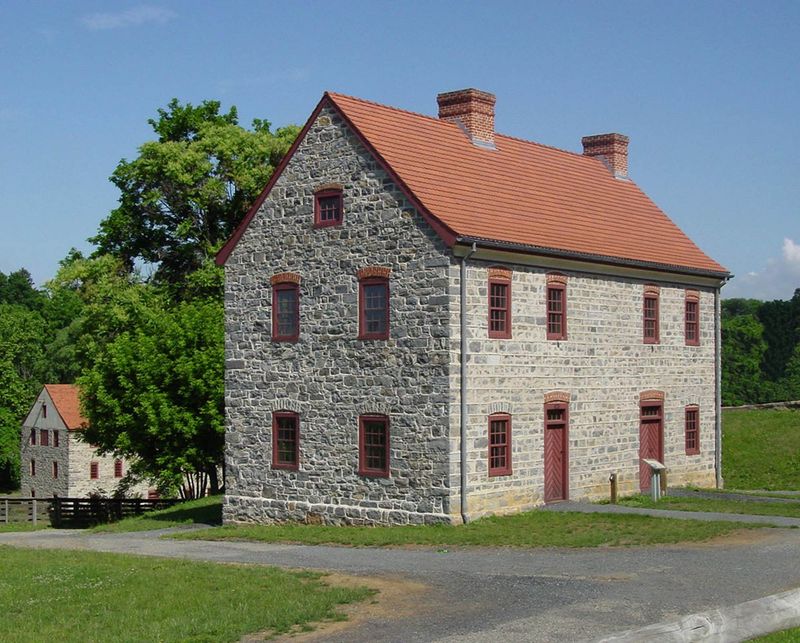
Moravian craftsmanship shines in every detail of this stunning 1780s limestone dwelling. Unlike many Pennsylvania farmhouses, this one features rare Germanic arched windows and a distinctive red tile roof that’s been meticulously maintained for generations.
The interior boasts hand-painted folk art directly on plaster walls a Moravian tradition brought from Europe. My favorite feature is the built-in corner cupboards with their original blue milk paint still visible after more than two centuries.
Where most farmhouses had simple cooking fireplaces, this one contains a massive five-plate jamb stove an early heating innovation that shows how advanced Moravian settlers were for their time. The original root cellar remains perfectly functional today.
5. Reading Riverfront Stone Farmhouse
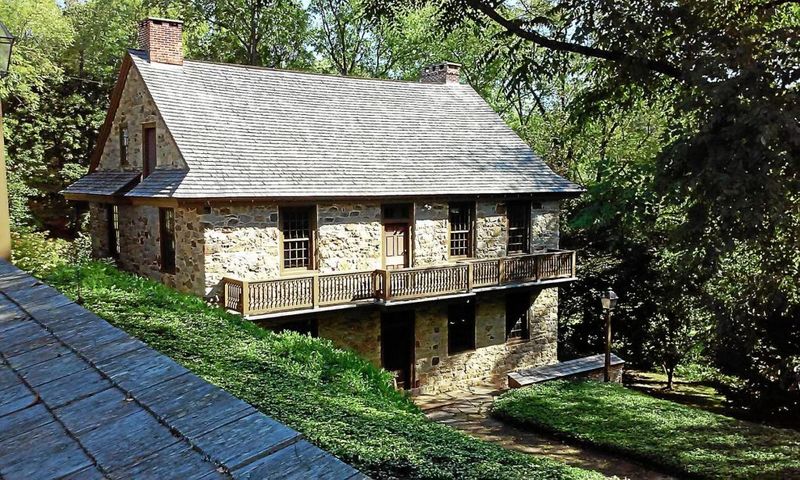
Perched above the Schuylkill River, this remarkable 1820s farmhouse demonstrates how Pennsylvania’s early farmers adapted European building techniques to local conditions. The asymmetrical fieldstone facade with its mix of gray, rust, and cream-colored stones creates a naturally beautiful pattern that no modern building can match.
A distinctive feature is the cantilevered forebay that extends the second floor outward, providing covered workspace below. This practical design element protected farm activities from harsh weather while maximizing interior space.
During canal-building days, this property served as both farm and waystation. Look for the unusual three-part Dutch door that allowed the farmer to conduct business without fully opening the home to strangers.
6. Philadelphia Stone Cottage
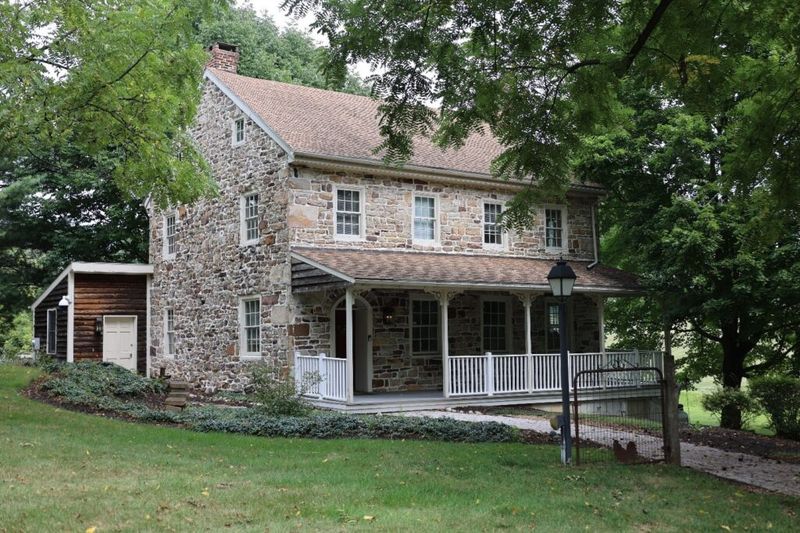
Though smaller than most on our list, this charming 1790s tenant farmer’s cottage represents an important piece of Pennsylvania’s agricultural history. Located just outside Philadelphia’s urban sprawl, its survival is something of a miracle in an area largely lost to development.
The cottage features classic Germanic stonework with precisely squared corners and carefully fitted stones. What makes it unique is the rare surviving bake oven attachment a rounded stone projection from the rear wall where bread was once baked for the entire farm community.
I love how the original casement windows remain intact, complete with hand-blown glass panes that create subtle distortions when you look through them. The single room downstairs with sleeping loft above shows how modestly farm workers once lived.
7. York Classic Stone Farmhouse
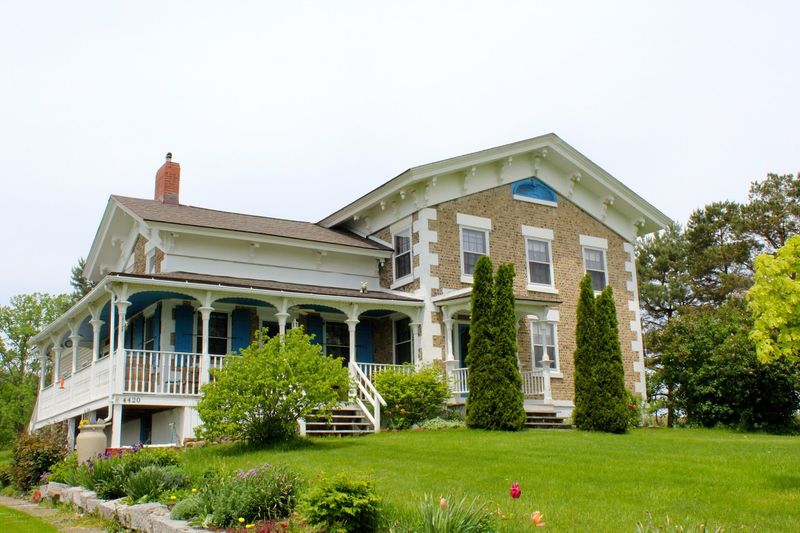
Standing proudly since 1810, this magnificent example of Federal-period architecture shows how prosperous York County farmers blended practicality with refined taste. The perfectly symmetrical facade features precisely cut limestone blocks with decorative quoins at the corners a sign of wealth and status in early America.
Unlike simpler farmhouses, this one boasts elegant fanlight windows above each entrance and delicate interior woodwork that rivals Philadelphia townhomes of the same period. The central hallway plan with formal parlors reflects growing American refinement.
During the Underground Railroad era, this farmhouse reportedly contained a hidden room accessible only through a disguised panel in the root cellar. Today, the property includes one of Pennsylvania’s few surviving eighteenth-century stone spring houses.
8. Allentown Heritage Stone Farmhouse
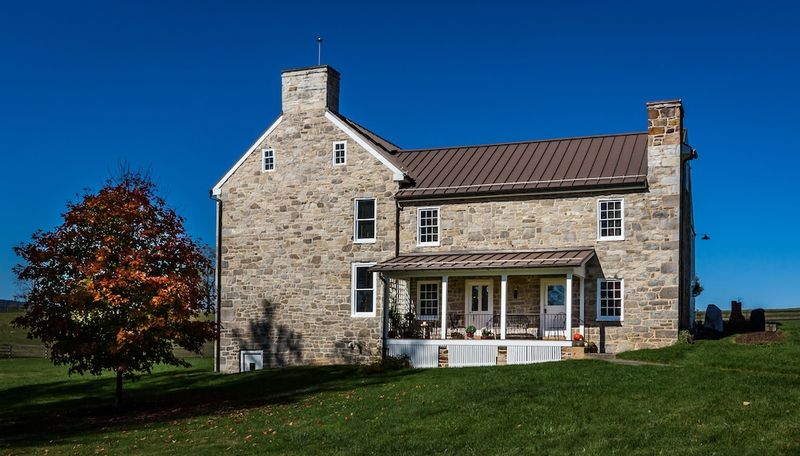
Weathered bluestone walls give this 1840s farmhouse its distinctive slate-gray color that stands out among Pennsylvania’s more common limestone structures. The property showcases how local materials shaped regional building styles, with stones quarried from the nearby Lehigh Valley.
What fascinates me is the rare summer kitchen that remains connected to the main house by a covered breezeway an unusual luxury that kept cooking heat and fire danger separate while allowing comfortable access in bad weather. The interior features a remarkable “walk-in” cooking fireplace large enough for several people to stand inside.
Look for the unique “date stones” embedded in the front facade carved blocks showing the year of construction and the original owners’ initials, a Pennsylvania Dutch tradition that added personal identity to these enduring homes.
9. State College Stone Farmhouse
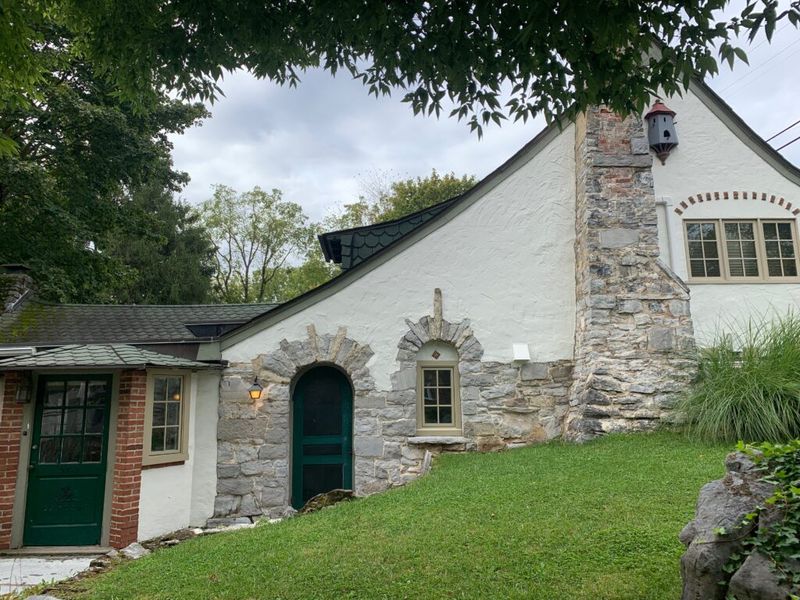
Hidden among rolling hills near Penn State University sits this remarkable 1830s sandstone beauty that showcases Central Pennsylvania’s distinct architectural heritage. The warm golden-brown stones create a welcoming glow at sunset that photographers often capture.
Unlike eastern Pennsylvania farmhouses, this one features a distinctive double-porch design with both lower and upper covered galleries across the front perfect for catching mountain breezes. The central chimney system splits into four separate flues that served individual room fireplaces.
During renovation, workers discovered a time capsule in the cornerstone containing newspapers, coins, and a handwritten letter from the original builder describing his hopes for the farm’s future. The property still maintains its original stone fence rows dividing fields just as they did nearly 200 years ago.
10. Carlisle Woodland Stone Farmhouse
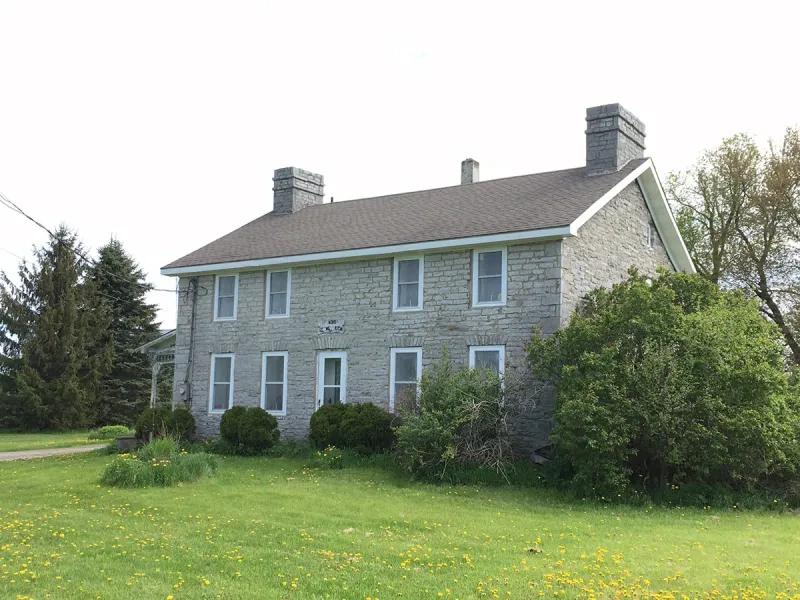
Secluded within a grove of ancient oaks, this pre-Revolutionary War farmhouse dates to 1765, making it one of Pennsylvania’s oldest surviving stone dwellings. The massive walls nearly two feet thick at the base are constructed from uncut fieldstones gathered from the surrounding fields.
What makes this property extraordinary is its pristine condition and authentic details. The original beehive oven extends from the kitchen fireplace, and hand-forged hardware still operates doors and windows.
During the Whiskey Rebellion of 1794, this farmhouse reportedly served as a meeting place for local farmers protesting the new federal tax. The cellar contains a rare surviving example of a colonial-era cold storage pit lined with river stones that maintained cool temperatures year-round.

